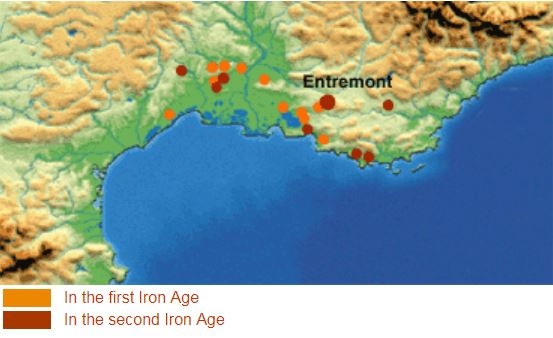- Home
- Society and power
- The statues
- Distribution of statues in southern Gaul (Midi region)
Distribution of statues of warriors, heroes and aristocrats in southern Gaul (Midi region).
The distribution of anthropomorphic sculptures in the round is centered in southern (Midi) Gaul in the regions of the lower Rhône Valley and western Provence. The phenomenon begins during the first Iron Age and continues into the second Iron Age. Only one example is found in the western Languedoc region (at Carla de Bouriège in the Aude region) but its date is uncertain. There is another possible cavalier from the end of the first Iron Age in Maihac (Aude region), but its attribution is not clear.
A region with strong cultural and political contrasts
In the lower Rhône Valley, the practice of affirming societies through sculpted representations of heroic beliefs reflected a strong tendency in traditional values. These ostentatious tributes to individuals raised to the level of gods participated in reinforcing the prestige of the ruling class. Since the power of this profoundly rural class was very divided it was necessary to regroup populations into federations in order to constitute a valid political and military entity. As early as the first Iron Age, this region, and particularly the backcountry of Marseilles, was isolated from the rest of the Midi region by this cultural phenomenon. Meanwhile, further to the north, between the costières of Nimes and Luberon, a different profound social evolution, structured during the 2nd century BC, was taking place. It was based on different values, which developed slowly from Mediterranean sources and influences. The aristocrat Craton, a prisoner of the last citadel of the Salyens, was part of this philo-Roman influence.
